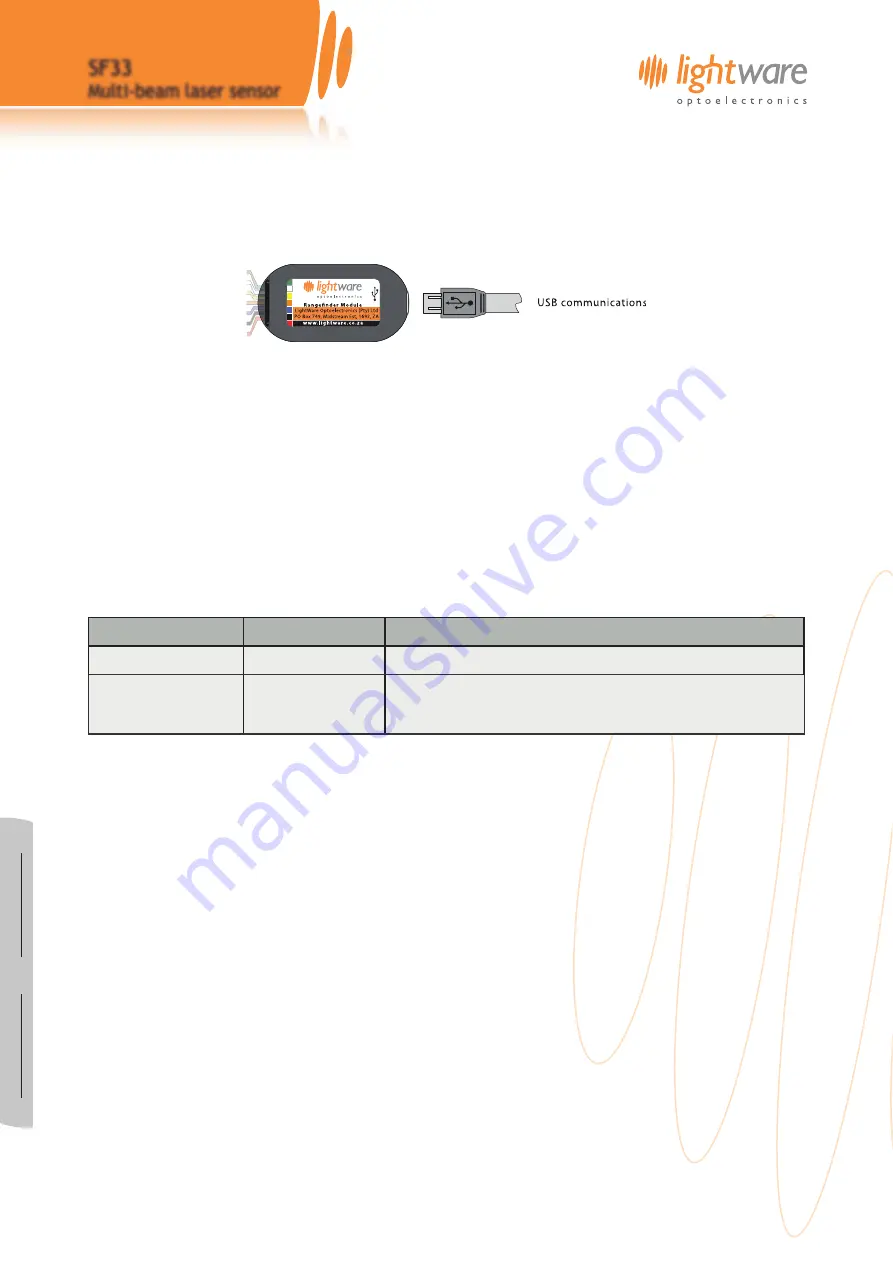
www
.lightware.co.za • info@
lightware.co.za
SF33
SF33
Multi-beam laser sensor
Product manual
4. Communicating with the USB port
The SF33 has a micro-B USB port that can be used to communicate with
LightWare Terminal
software on a PC. This connection also
gives power to the unit providing a quick way to test and configure the SF33. The
LightWare Terminal
software will automatically
detect the USB port that is connected to the SF33 and communications can be established by clicking on the “Connect” icon. If more
than one compatible device is present, click the “Laser” icon to select which USB port should be active.
Figure 5 :: USB communications
Once communication has been established, settings can be changed by pressing the
<SPACE>
key to access the menu and then
selecting the menu item that needs changing. Pressing the
<SPACE>
key again restarts the measuring process. More details of the
menu items are discussed in the sections that follow.
If you want to use a different serial emulation program then the USB serial protocol should be set to 115200 baud with 1 stop bit and
no parity or handshaking. All communications are in standard ASCII format.
5. System configuration
There are two settings that provide the overall system configuration for the SF33 and these affect the behaviour of each of the
interfaces.
The “1: Active data port” selection directs the distance results to one of the two available data ports, either the serial port or the
USB port. Only one of these ports can be active at a time.
USB option:
When connected to a PC with the USB cable, it is convenient to have the distance results displaying in the
Terminal window. Select the USB option with the SF33 running and the distances from each laser beam along with the
output voltage from the analog port are displayed continuously.
Serial option:
When connected to a host controller the distance results should be directed to the serial port. The menu
system is still available using the USB port but distance readings will not be displayed when the SF33 is running.
The “2: Snapshot resolution / Time series filter” selection affects the way that distance readings are taken and presented to the
output ports.
Snapshot resolution:
This selection offers 6 alternative resolution settings from 1.0 m down to 0.03 m. The lowest
resolution selection allows for the highest speed measurements whilst better resolution reduces the measuring speed.
Results are updated on the interface ports at the time specified by their associated update rate settings. Each reading is
given as a “snapshot” of the latest result at that time.
Time series filter:
This selection switches on a recursive filter that uses the historical values of previous results to smooth
the output. This presents higher resolution and less result-to-result variation but also slows down the rate at which
distance readings can change.
Setting
Values
Description
1: Active data port
Serial <-> USB
Selects the serial or USB port to output distance data.
2: Snapshot resolution /
Time series filter
1.00 m ... 0.03 m <->
filter active
Selects the resolution of each reading taken. When selected, the “Time
series filter” changes the result from a single snapshot to a recursive filter
output.
SF33 Multi-beam sensor - Product Manual - Revision 1
of
© LightWare Optoelectronics (Pty) Ltd, 2016
7
15















